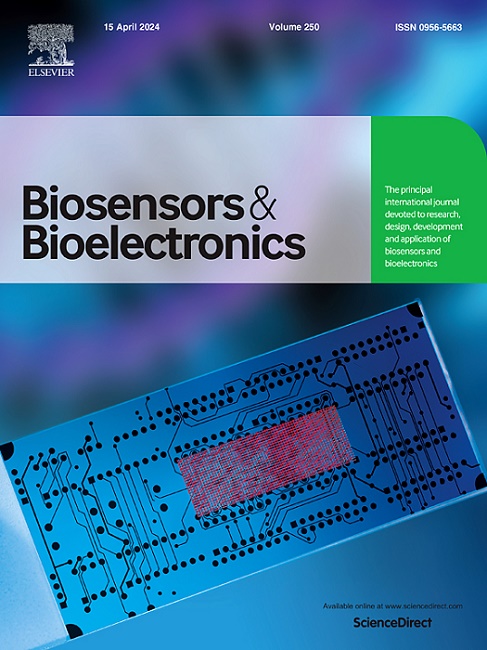Construction of a hierarchical DNA circuit for single-molecule profiling of locus-specific N6-methyladenosine-MALAT1 in clinical tissues
IF 10.7
1区 生物学
Q1 BIOPHYSICS
引用次数: 0
Abstract
N6-methyladenosine (m6A) is the most important internal methylation in eukaryotic RNAs, and it is critically implicated in diverse RNA metabolisms for cancer development. Because epigenetic modifications do not interfere with Watson-Crick base pairing and m6A modification is not susceptible to chemical decorations, standard hybridization-based techniques cannot be applied for sensing m6A in RNAs. Consequently, the development of new methods for accurate and sensitive profiling of locus-specific m6A in RNAs remains a great challenge. Herein, we demonstrate for the first time the construction of a hierarchical DNA circuit for single-molecule profiling of locus-specific m6A-metastasis-associated lung adenocarcinoma transcript 1 (m6A-MALAT1) in clinical tissues. Taking advantage of high discrimination of VMC10-DNAzyme between m6A and A, exponential efficiency of hierarchical DNA circuit, and ultrahigh signal-to-noise ratio of single-molecule detection, this nanodevice exhibits attomolar sensitivity with a limit of detection (LOD) of 1.8 aM for m6A-MALAT1 in vitro and a dynamic range of 7 orders of magnitude. Moreover, it can discriminate 0.001% m6A-MALAT1 from excess A-MALAT1, quantify m6A-MALAT1 in diverse cancer cells at single-cell level, distinguish m6A-MALAT1 expressions in breast cancer patients and healthy individuals, and monitor cellular m6A-MALAT1 for gene therapy, offering a promising platform for epitranscriptomic research and clinical diagnostics.
求助全文
约1分钟内获得全文
求助全文
来源期刊

Biosensors and Bioelectronics
工程技术-电化学
CiteScore
20.80
自引率
7.10%
发文量
1006
审稿时长
29 days
期刊介绍:
Biosensors & Bioelectronics, along with its open access companion journal Biosensors & Bioelectronics: X, is the leading international publication in the field of biosensors and bioelectronics. It covers research, design, development, and application of biosensors, which are analytical devices incorporating biological materials with physicochemical transducers. These devices, including sensors, DNA chips, electronic noses, and lab-on-a-chip, produce digital signals proportional to specific analytes. Examples include immunosensors and enzyme-based biosensors, applied in various fields such as medicine, environmental monitoring, and food industry. The journal also focuses on molecular and supramolecular structures for enhancing device performance.
 求助内容:
求助内容: 应助结果提醒方式:
应助结果提醒方式:


